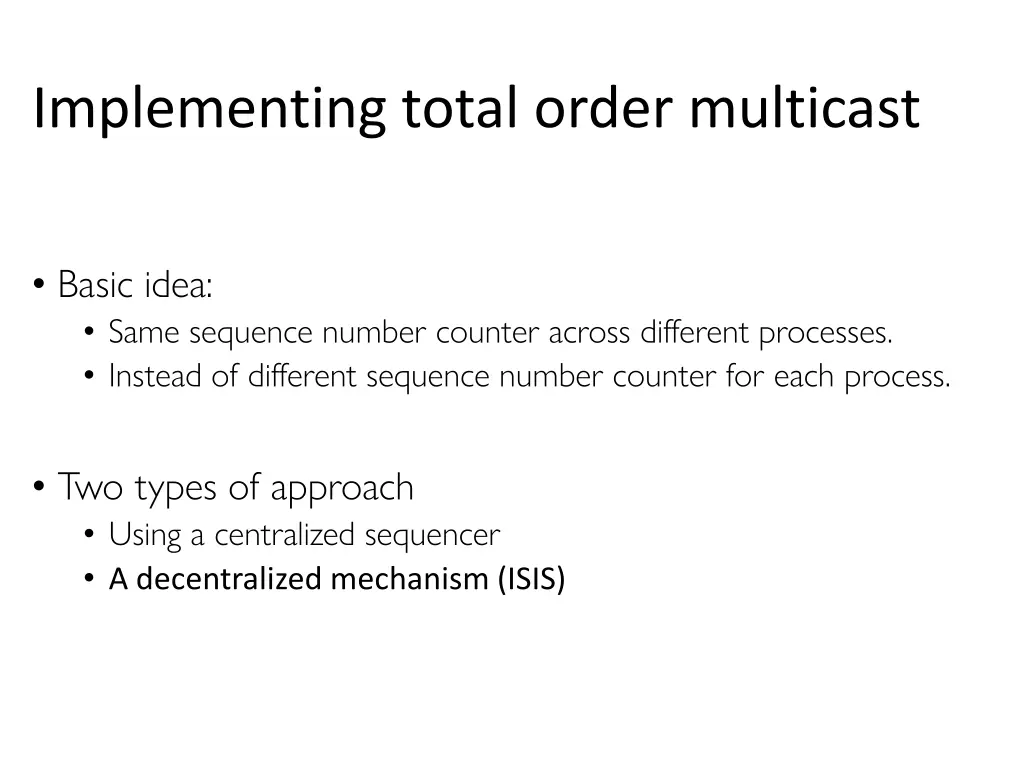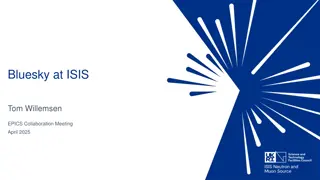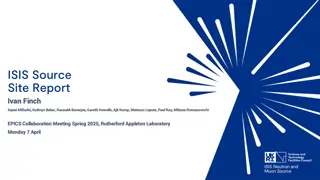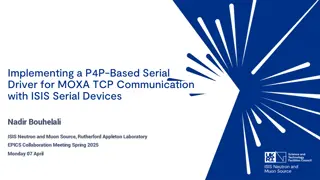
Unique Total Ordering Approach
"Learn about implementing total order multicast with the unique idea of using the same sequence number counter across different processes, rather than separate counters for each process. Explore the ISIS algorithm for total ordering and how ties are broken in priority queues. Get insights into the decentralized and centralized approaches for achieving total order multicast."
Download Presentation

Please find below an Image/Link to download the presentation.
The content on the website is provided AS IS for your information and personal use only. It may not be sold, licensed, or shared on other websites without obtaining consent from the author. If you encounter any issues during the download, it is possible that the publisher has removed the file from their server.
You are allowed to download the files provided on this website for personal or commercial use, subject to the condition that they are used lawfully. All files are the property of their respective owners.
The content on the website is provided AS IS for your information and personal use only. It may not be sold, licensed, or shared on other websites without obtaining consent from the author.
E N D
Presentation Transcript
Implementing total order multicast Basic idea: Same sequence number counter across different processes. Instead of different sequence number counter for each process. Two types of approach Using a centralized sequencer A decentralized mechanism (ISIS)
ISIS algorithm for total ordering P2 1 Message 3 P4 2 2 1 3 Agreed Seq 1 2 P1 3 P3
ISIS algorithm for total ordering Sender multicasts message to everyone. Receiving processes: reply with proposed priority (sequence no.) larger than all observed agreed priorities larger than any previously proposed (by self) priority store message in priority queue ordered by priority (proposed or agreed) mark message as undeliverable Sender chooses agreed priority, re-multicasts message id with agreed priority maximum of all proposed priorities Upon receiving agreed (final) priority for a message m Update m s priority to final, and accordingly reorder messages in queue. mark the message m as deliverable. deliver any deliverable messages at front of priority queue. P2 1 Message 3 P4 2 2 1 3 Agreed Seq 1 2 P1 3 P3
Will continue ISIS in next class. Additional slides provided for early reference.
Example: ISIS algorithm A A:1 A:2 C:2 B:3 P1 C P2 B:1 A:2 C:3 P3 B:1 A:2 C:3 B
How do we break ties? Problem: priority queue requires unique priorities. Solution: add process # to suggested priority. priority.(id of the process that proposed the priority) i.e., 3.2 == process 2 proposed priority 3 Compare on priority first, use process # to break ties. 2.1 > 1.3 3.2 > 3.1
Example: ISIS algorithm A A:1.1 C:3.3 A:2.3 C:2.1 B:3.1 P1 C P2 B:1.2 B:3.1 A:2.2 A:2.3 C:3.2 C:3.3 P3 B:1.3 B:3.1 A:2.3 C:3.3 B






















